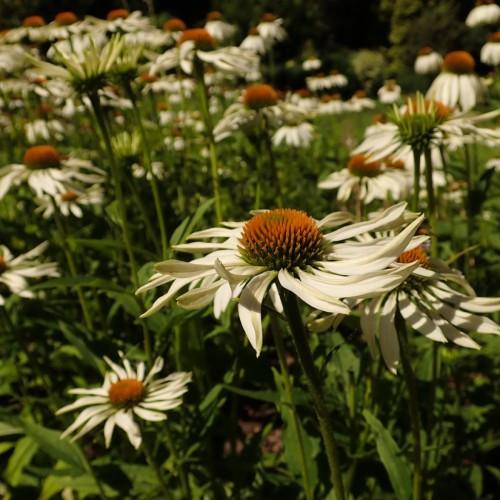
purple coneflower
Echinacea purpurea 'Lucky Star'
Also Known As - echinacea,purple coneflower,purple coneflowerCycle:
Herbaceous Perennial
Watering:
Minimum
Hardiness Zone:
3 - 8
Flowers:
Flowers In Summer
Sun:
Full sun
Soil:
Sandy Loamy Clay Rocky
Fruits:
Fruits In Autumn Ready In
Leaf:
Yes
Growth Rate:
Moderate
Maintenance:
Low
Drought Tolerant:
Yes
Care Level:
Medium
watering
Purple coneflowers should be watered regularly to keep the soil moist but not soggy. Water when the top inch of soil is dry to the touch. Generally, water deeply 2-3 times a week, or daily if planted in a location with strong afternoon sun. When the weather is very hot, water more frequently. Let the soil dry out in between watering to allow the roots to get access to oxygen. Water in the morning or evening when temperatures are cooler to minimize evaporation. When watering, water slowly and deeply to encourage the roots to reach deep into the soil. Avoid overhead watering, as too much wet foliage can increase the risk of fungal diseases.
sunlight
Purple coneflower, or Echinacea purpurea “Lucky Star”, can thrive in a variety of light conditions. As such, it will need some direct sunlight each day to help it blossom and flourish. The amount of sunlight each day will depend on the climate and location of the plant with cooler areas needing more hours of sunlight each day. Generally speaking, they require at least 6 hours of direct sunlight every day to perform properly. If they are placed in an area that gets less than 6 hours of direct sunlight, supplementing with artificial light is recommended.
pruning
Purple coneflowers (Echinacea purpurea 'Lucky Star') should be pruned at the end of the summer, usually late August or early September. Prune only the dead, fading flower heads, leaving healthy buds intact. Cut the flowers. down to the level of the green growth. If the foliage is still healthy, these can remain during the winter. In the spring, cut out any dead or damaged foliage and the old flower heads. Pruning will encourage growth and more flowers to come in the following season.
